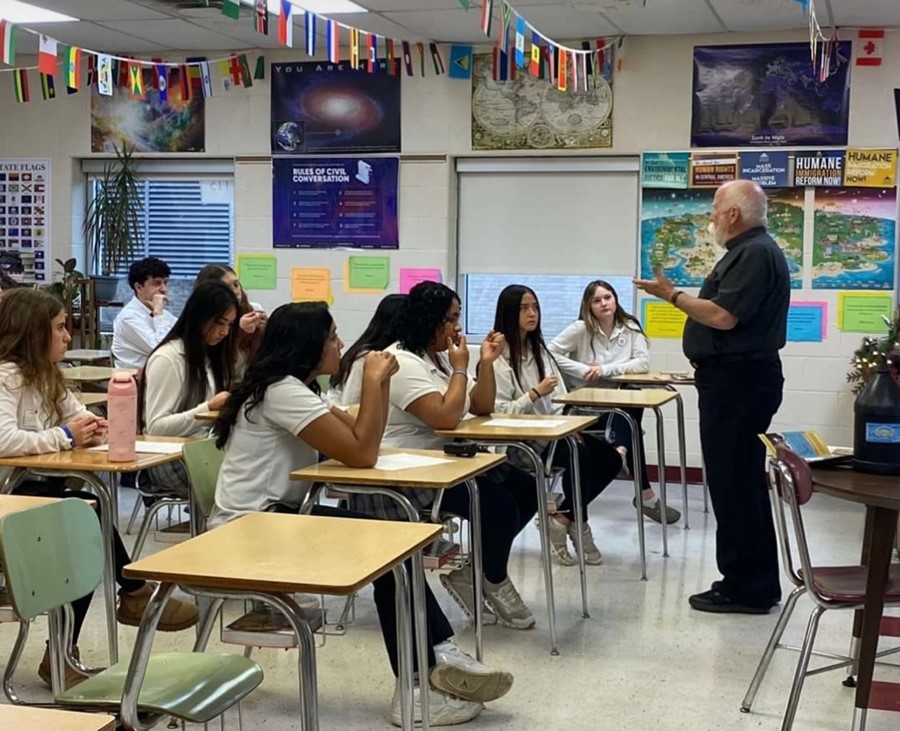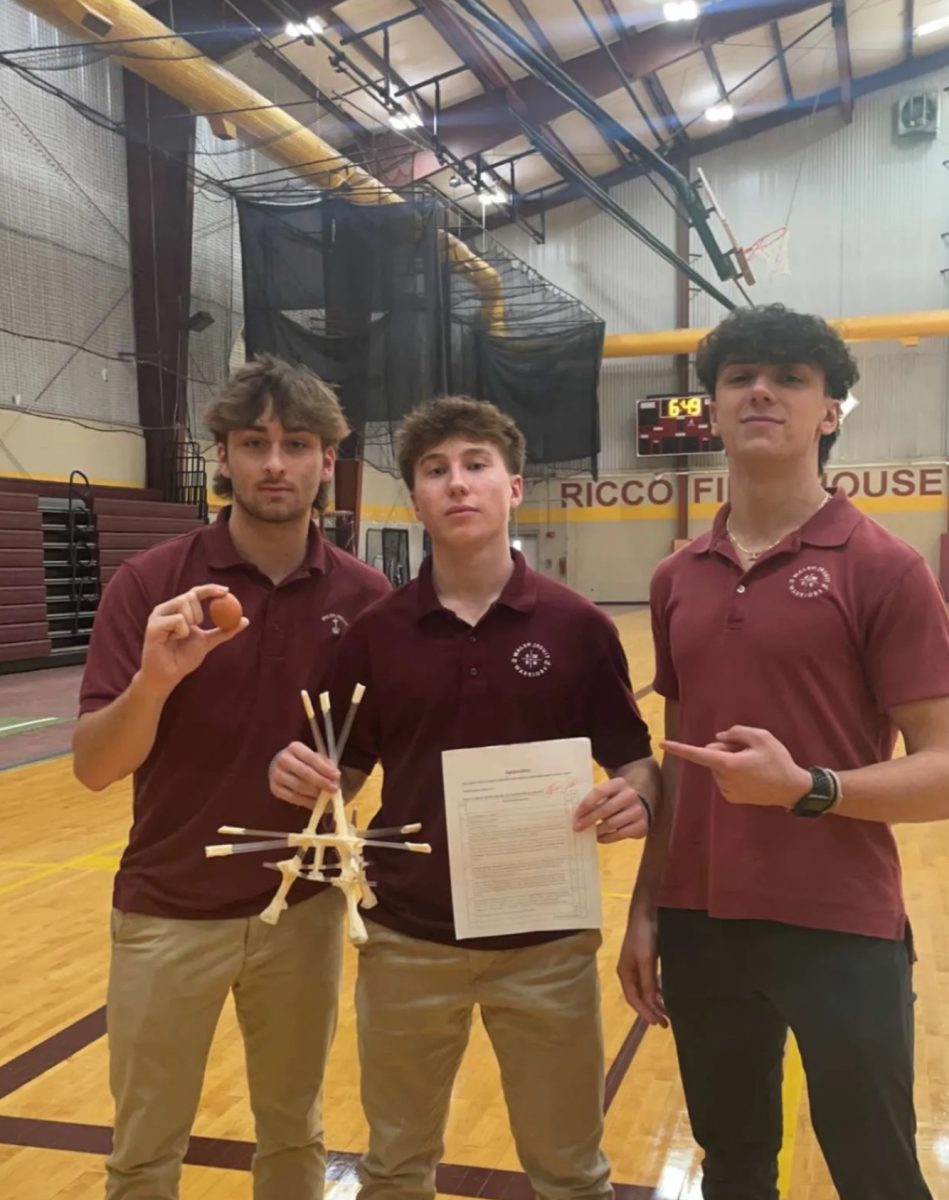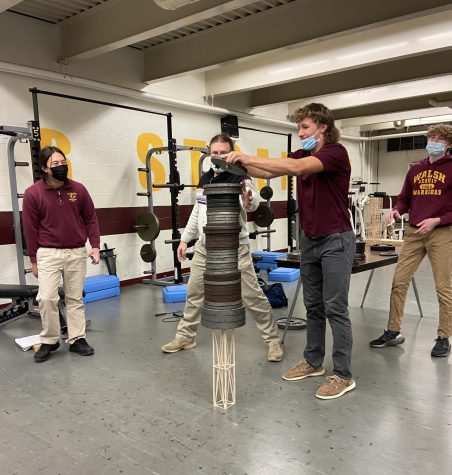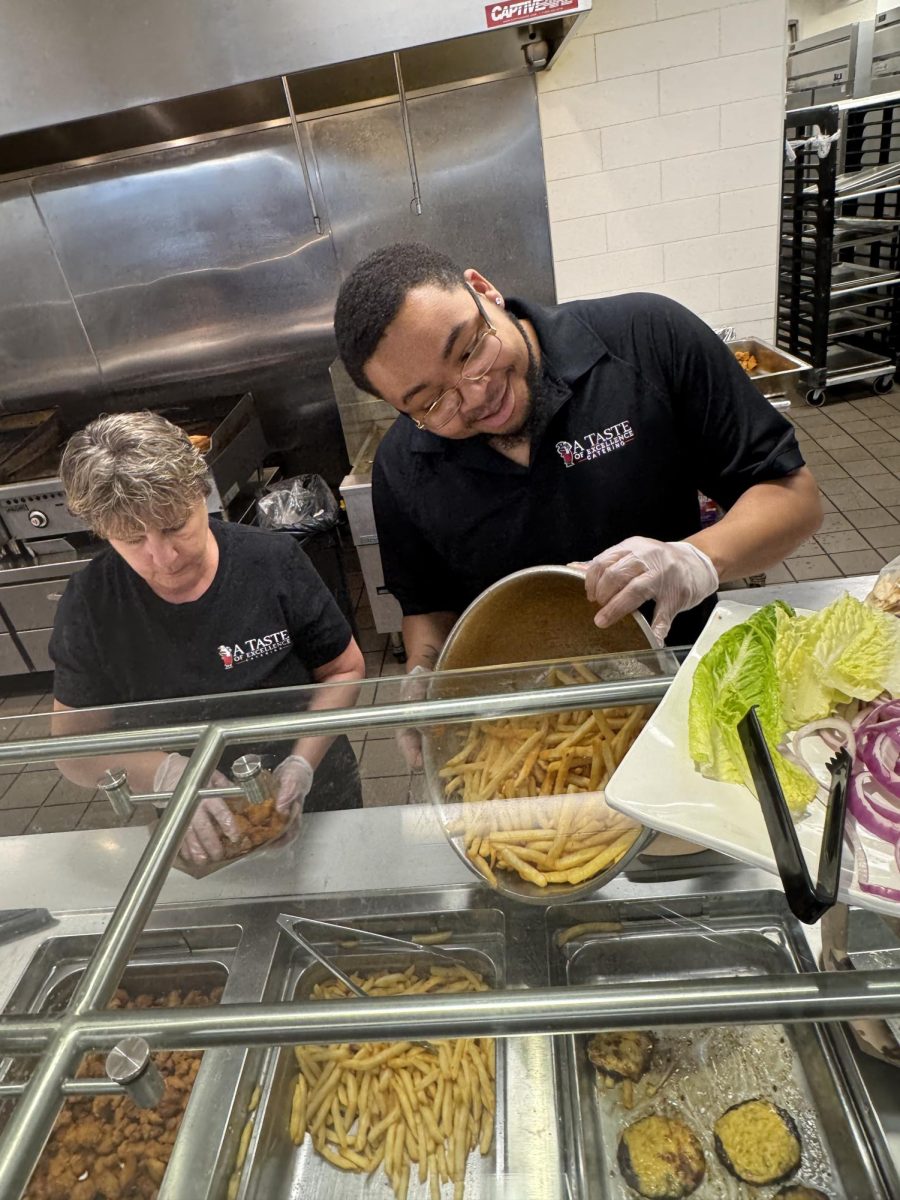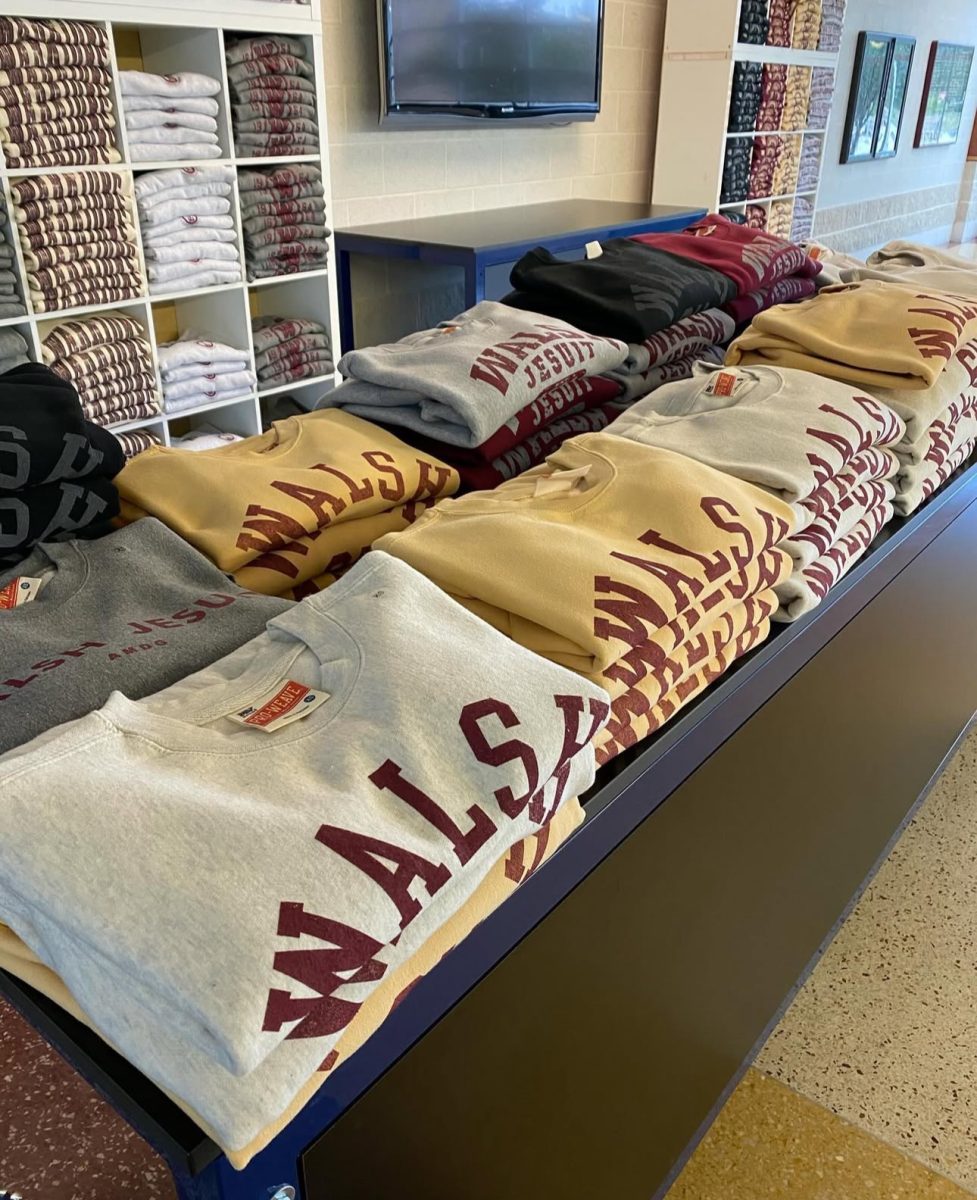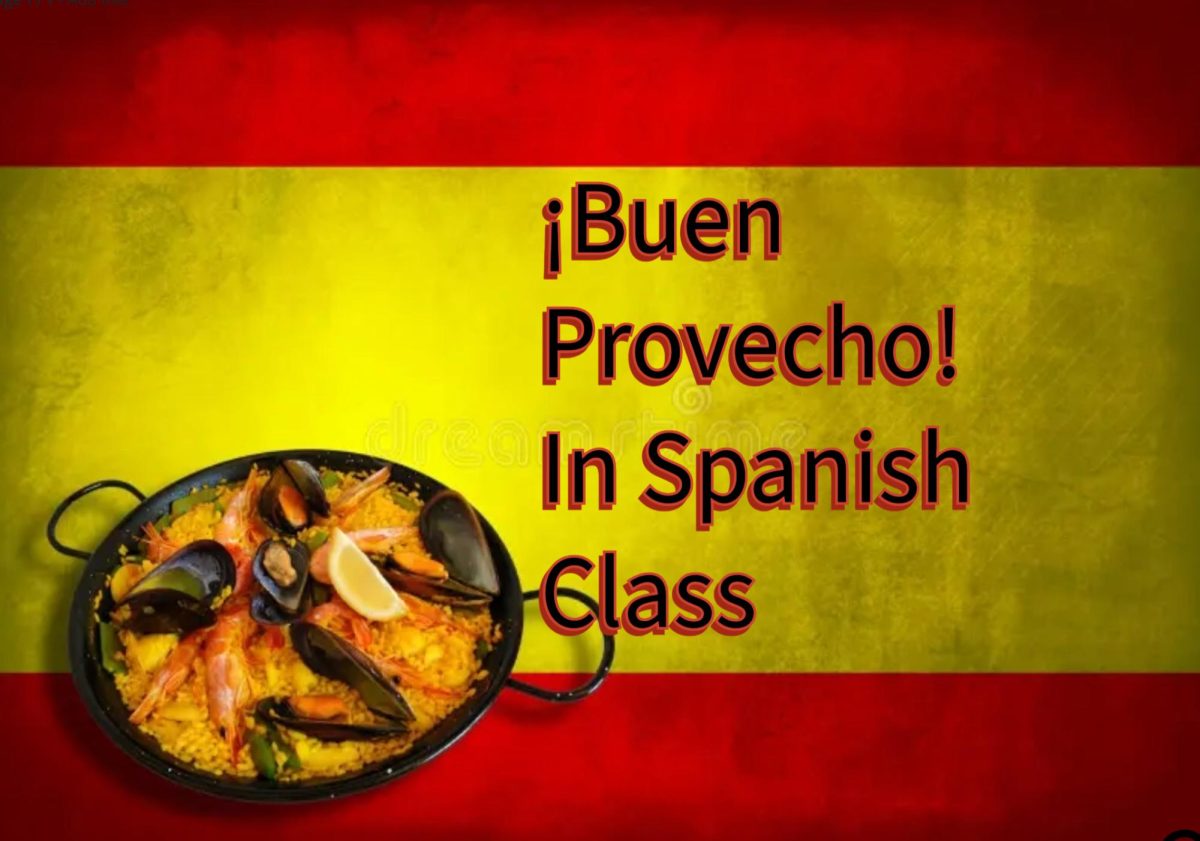Happy Year of the Rat!
February 3, 2020
The most important holiday in China is the Chinese New Year. The symbol for each year rotates among twelve animals. This year, starting on January 25, is officially the Year of the Rat. Since the Chinese New Year has been internationalized in recent years, images of “the rat” are found around the world. Even Mickey Mouse can be used as a depiction.
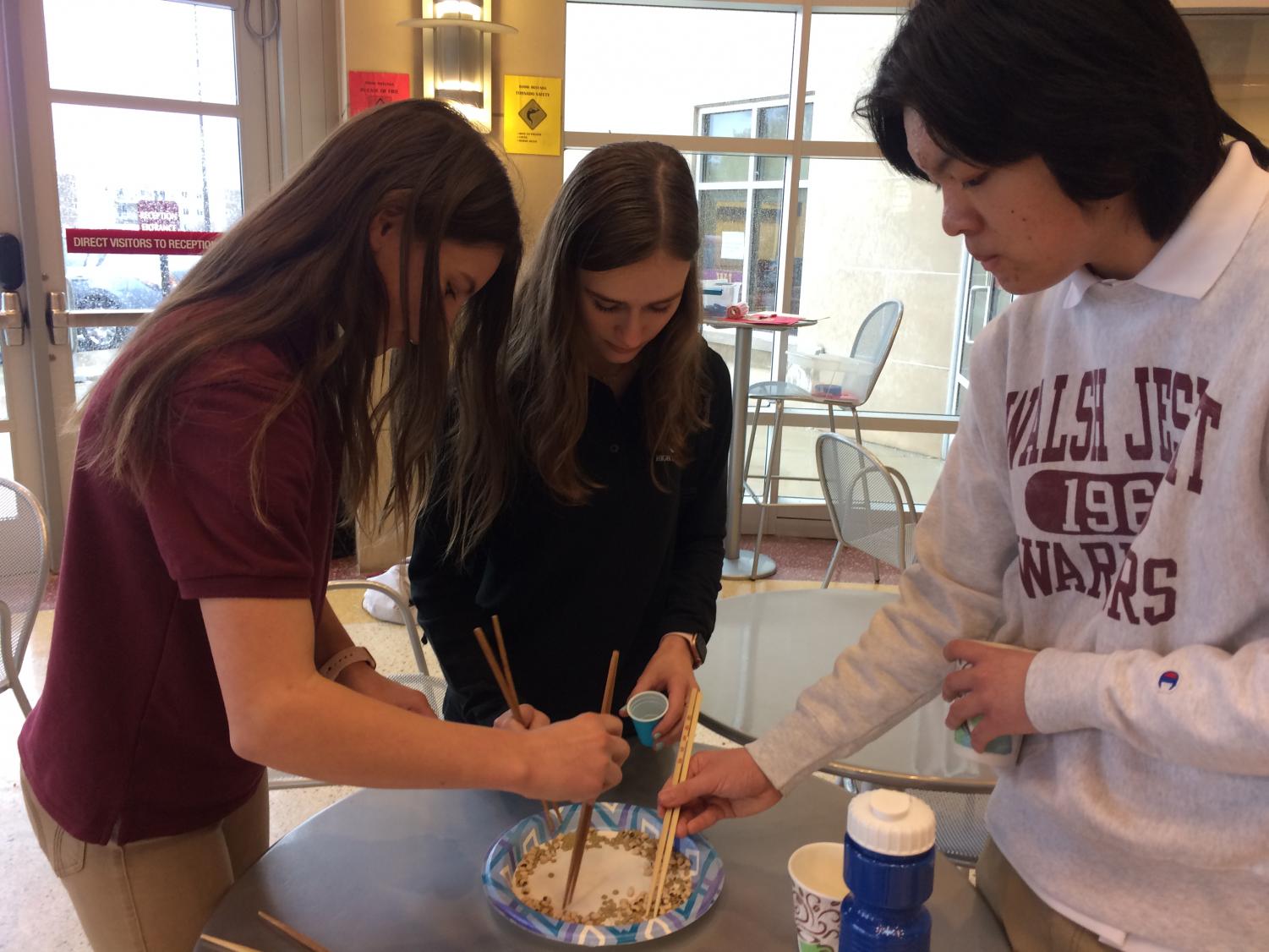
Students attending the cultural event practiced using chopsticks by picking up beans.
There are countless stories about how the 12 animals became the symbols for Chinese years. The most famous story says that in ancient times humans wanted 12 zodiac animals to represent years so they could keep track of time. The Jade Emperor, basically the main god in Chinese culture, then held a competition for animals to sign up. A cat and a rat decided to go together. However, the rat forgot to wake the cat up on the day of competition. The small rat was going alone and soon became tired, so she used a trick to get on an ox’s back. When the fast-moving ox was about to win the competition, the rat jumped off and took first place. The cat was mad at the rat for not waking him up. Because the cat wound up in last place, cats and rats became enemies.
In China, the children’s favorite part of the New Year is to ask for 红包(Red Packets) with cash in them. The Red Packets are believed to have the power to protect the children from being caught by the ghost “Nian” during the New Year’s season. As they visit all their extended family members during the Chinese New Year, the children receive a handful of Red Packets, which they will put under their pillows to protect themselves from “Nian.”
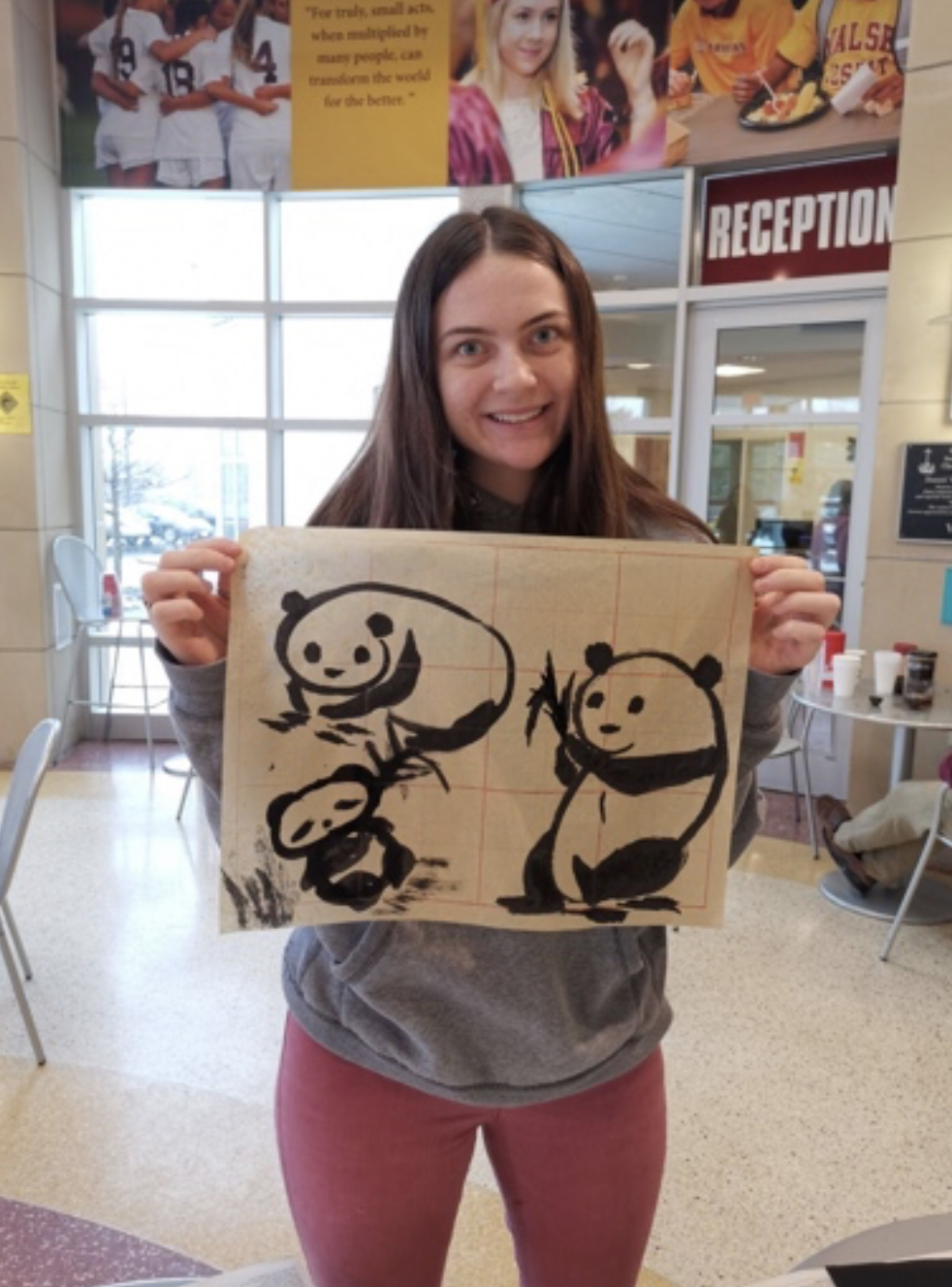
Amanda Raynow ’20 participated in the cultural stations on Friday, January 24.
This year’s Chinese New Year celebration activities at Walsh Jesuit lasted for four days. Beginning Friday, January 24, New Year’s Eve, cultural stations were set up in the Rotunda during lunch periods. There was tea for students and faculty to try, paper cutting and origami tutorials, hacky sacks, calligraphy, and painting. It turns out that painting was the most popular station, followed by hacky sacks. Students also enjoyed using Chinese calligraphy brushes to draw pandas.
During the weekend, the school was decorated by students in Chinese language classes along with exchange students. Classroom windows displayed intricate red paper cuttings. Lanterns were hung in the Commons. A pair of couplets written in Chinese characters by school president Mr. Karl Ertle were posted outside the Rotunda.
Junior exchange student Kaiwen Guo (Kevin) expressed his satisfaction with all the work that WJ students and faculty did to make Chinese students feel welcome while they are thousands of miles away from home. “It is definitely not all the same as how it feels during Chinese New Year in China, but I really appreciate the efforts that the WJ community put in for us,” said Kevin.
Junior Carly Ryan liked the nod to the Chinese New Year, as well. “I enjoy the festive atmosphere in the school. It is fun to engage in another culture through the activities and decorations,” she said.
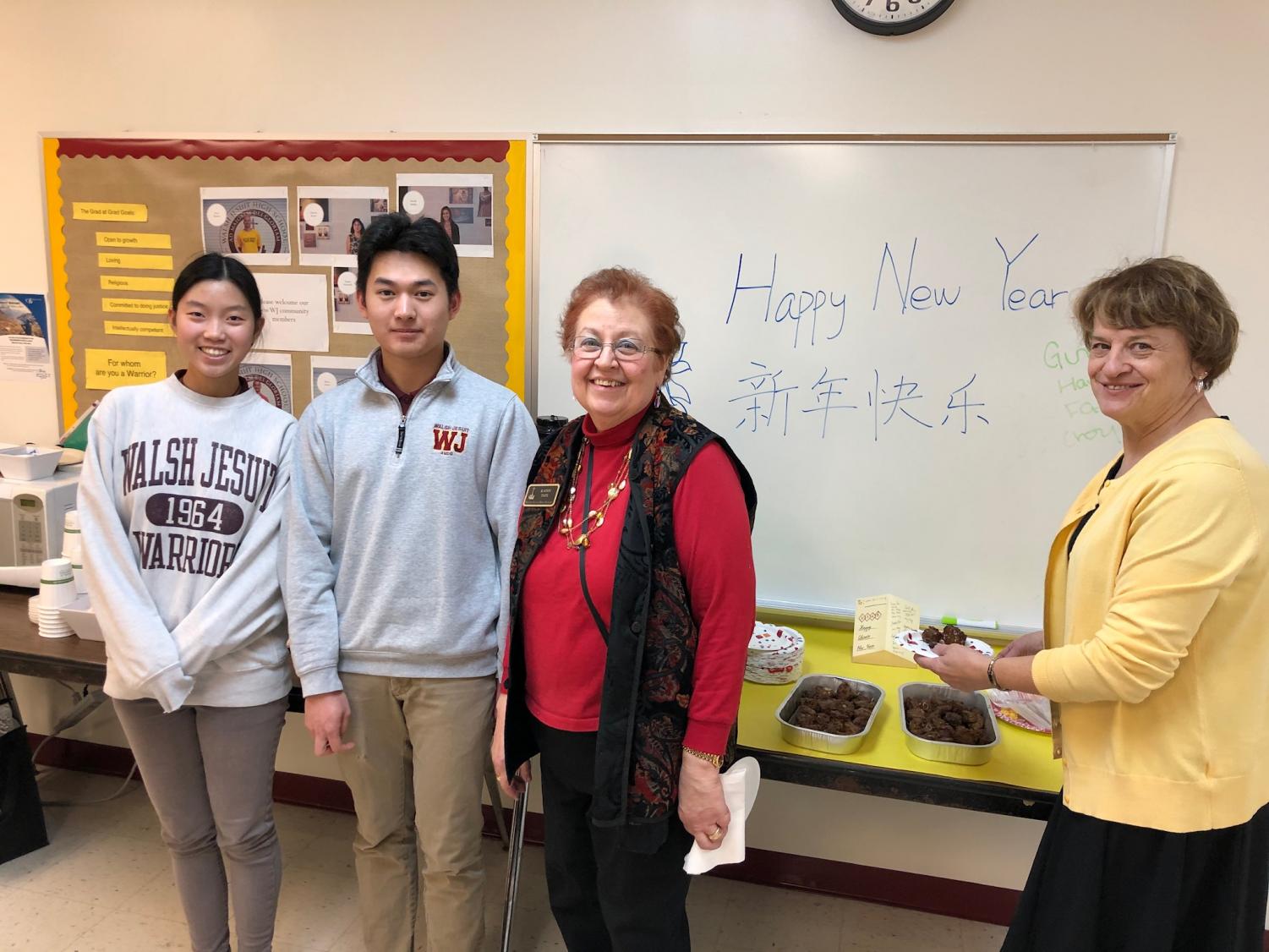
Mrs. Tate and Ms. Duarte enjoy the braised ribs prepared for faculty members. Senior Wenbiao Shao (Alan) and junior Jessica Che welcome them and share further information about Chinese new year celebrations.
French teacher Mrs. Samantha Ezzo was also impressed by the activities and decorations. She offered extra credit to students who visited the cultural stations. “While the Chinese New Year might not be a topic we cover in the French curriculum, I do believe it is important for my students to learn about other cultures and traditions. An important aspect of world language studies is to teach students how to be culturally competent,” Mrs. Ezzo said.
On Monday, January 27, in order to show appreciation to the WJ community, senior exchange students Wenbiao Shao (Alan) and Hengrui Wang (Henry) made braised ribs for the faculty to enjoy during their lunch periods.

